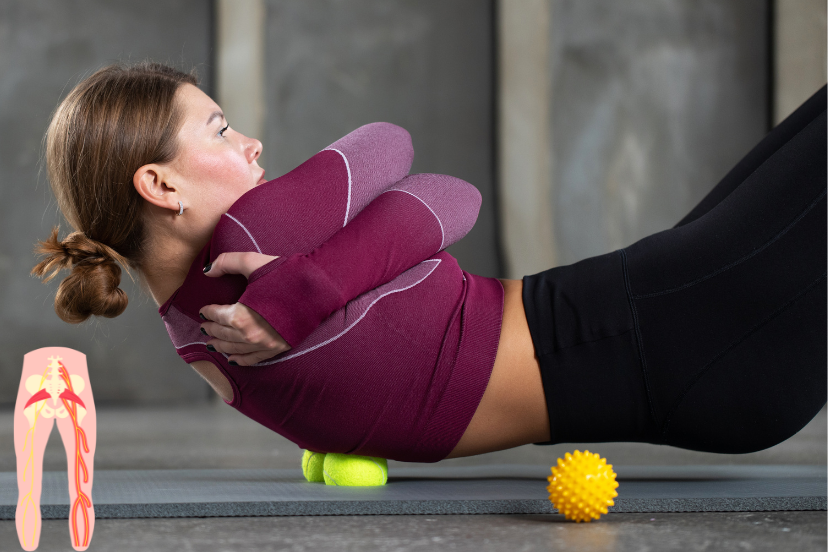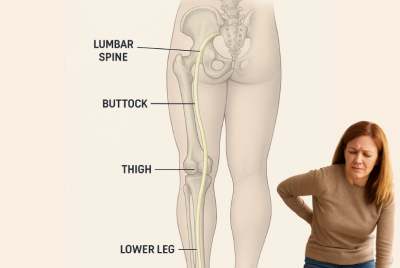Self Massage for Sciatica
Discover effective self massage techniques for sciatica relief. Say goodbye to your pain. Dive in to learn more now! As someone who has battled with sciatica and discovered the immense relief self-massage can provide, I’m excited to share my insights on this topic. Sciatica can be excruciating, but self-massage is a valuable tool for managing the pain and improving your quality of life.
Introduction to Self Massage for Sciatica
Sciatica is a condition that can be both physically and mentally taxing. The searing pain that radiates down your leg can make even the simplest tasks feel like insurmountable challenges. But fear not because there’s hope, and it comes in the form of self-massage.
What is Sciatica?
Before we dive into the world of self-massage, let’s understand what sciatica is. Sciatica is not a standalone ailment but a symptom of an underlying issue, often caused by a herniated disc, spinal stenosis, or even pregnancy. It manifests as pain, tingling, or numbness in the sciatic nerve, which runs from your lower back down through your buttocks and into your legs.
Benefits of Self Massage for Sciatica
Why should you consider self-massage for sciatica? Well, there are several compelling reasons. Firstly, self-massage can provide immediate relief by releasing tension and increasing blood flow. Secondly, it’s a non-invasive and cost-effective way to manage your pain. Most importantly, it empowers you to take control of your own well-being.
How to Prepare for Self-Massage
To embark on your self-massage journey, you need to set the stage. Find a quiet, comfortable space where you won’t be disturbed. Use a firm surface like a yoga mat or a padded floor to lie down. Ensure you have essential tools like massage balls or a foam roller within reach.
Self-Massage Techniques for Sciatica
Now, let’s get hands-on. Here are some effective self-massage techniques to alleviate sciatica pain:
Target Areas for Self-Massage
During self-massage, focus on the following target areas:
- Lower Back: Start by massaging your lower back to release tension in the spine.
- Glutes: Pay special attention to the gluteal muscles, which can compress the sciatic nerve.
- Hamstrings: Gently massage your hamstrings to alleviate tension in the leg.
Self-Massage Do’s and Don’ts
When engaging in self-massage for sciatica, it’s crucial to follow some essential do’s and don’ts to ensure a safe and effective experience.
By following these do’s and don’ts, you can harness the full potential of self-massage for sciatica relief while staying safe and comfortable.
Do:
- Use gentle pressure: Apply moderate, controlled pressure during self-massage to prevent discomfort or injury.
- Start slowly: Begin with light strokes and gradually increase pressure as needed.
- Focus on target areas: Concentrate on the lower back, glutes, and hamstrings, which are key areas for sciatica relief.
- Stay consistent: Establish a regular self-massage routine to reap long-term benefits.
- Listen to your body: Pay attention to any signs of discomfort or pain during the massage and adjust accordingly.
- Use appropriate tools: Invest in quality massage balls or foam rollers to enhance your self-massage sessions.
Don’t:
- Apply excessive force: Avoid using excessive pressure that could lead to bruising or worsen your condition.
- Massage directly over inflamed areas: Steer clear of massaging directly on areas of inflammation to prevent aggravation.
- Rush the process: Take your time during self-massage; rushing may result in ineffective relief.
- Neglect professional guidance: Consult a healthcare provider before starting self-massage, especially if you have underlying medical conditions.
- Overlook proper technique: Ensure you are using the correct techniques to maximize the benefits and minimize risks.
When and How Often to Perform Self-Massage
The frequency of self-massage sessions varies from person to person. Some may benefit from daily sessions, while others find relief with less frequent massages. Listen to your body and adjust accordingly.
Tools and Oils for Self-Massage
Enhance your self-massage experience with the following tools and oils:
- Massage Balls: Great for targeting specific areas of tension.
- Essential Oils: Lavender or peppermint oil can add a soothing element to your massage.
Combining Self-Massage with Other Therapies
Combining self-massage with other therapies can significantly enhance your journey toward sciatica relief.
Consider incorporating stretching exercises and heat therapy into your routine to maximize your results. These complementary therapies can work wonders alongside self-massage.
Integrate stretching exercises: Incorporate regular stretching routines that target the lower back and leg muscles. These exercises can improve flexibility and complement the benefits of self-massage.
Leverage heat therapy: Applying heat to the affected area before self-massage can relax muscles and increase blood flow, making your massage more effective.
Stay hydrated: Drinking an adequate amount of water is vital as it helps flush out toxins released during self-massage, reducing the risk of muscle soreness.
Maintain a healthy diet: Consume foods rich in anti-inflammatory properties, such as fruits, vegetables, and omega-3 fatty acids. This can aid in reducing overall inflammation.
Consult a physical therapist: Seek guidance from a physical therapist who can recommend a tailored combination of therapies, including self-massage, to address your specific sciatica needs.
By actively combining self-massage with these therapies, you can create a comprehensive approach to managing sciatica and experience improved pain relief and overall well-being.
Real-Life Success Stories
Don’t just take my word for it. Here are a couple of stories from individuals who have found relief through self massage for sciatica:
Richard W, New York: “I used to rely on pain medication, but self-massage has become my go-to solution. It’s changed my life!”
Lewis E, New York: “I was skeptical at first, but after consistent self-massage sessions, I can now walk without wincing in pain.”
Common Misconceptions About Self-Massage
Misconceptions about self-massage abound. Let’s clear up a few:
Misconception 1: Self-massage is too complicated. It’s actually quite simple once you get the hang of it.
Misconception 2: It doesn’t work. Numerous studies and real-life experiences prove its effectiveness.
Scientific Evidence and Research
Scientific research backs the effectiveness of self-massage for sciatica. Studies have shown that it can reduce pain and improve mobility, making it a valuable component of pain management.
Lifestyle Changes for Long-Term Relief
While self-massage provides immediate relief, adopting a healthy lifestyle can prevent sciatica from recurring. Maintain good posture, exercise regularly, and watch your diet to support long-term relief.
FAQs About Self Massage for Sciatica
Is self-massage suitable for everyone with sciatica?
It can benefit many individuals with sciatica, but it’s essential to consult with a healthcare professional to ensure it’s safe for your specific condition.
How long does it take to experience relief from self-massage?
Relief can vary from person to person. Some may experience immediate relief, while others may require consistent practice over time.
Can I perform self-massage even if I have no experience?
Absolutely! Start with simple techniques and gradually progress as you become more comfortable. There are plenty of resources available to help you learn.
Are there any potential risks or side effects of self-massage?
When done correctly, self-massage is generally safe. However, using excessive force or incorrect techniques can lead to discomfort or bruising.
Should I stop other forms of treatment when using self-massage?
Self-massage can be used alongside other treatments, but it’s essential to coordinate with your healthcare provider to ensure a comprehensive approach to managing sciatica.
Self Massage for Sciatica – Conclusion
In conclusion, self-massage is a powerful ally in the battle against sciatica. It’s a safe, accessible, and effective way to manage pain and regain control of your life. So, roll up your sleeves, get your massage tools ready, and take the first step toward a pain-free future.
Disclaimer
Please note that the information provided in this article is for informational purposes only and should not replace professional medical advice. If you’re experiencing sciatica pain or any health concerns, it’s advisable to consult a healthcare professional for proper diagnosis and treatment.





